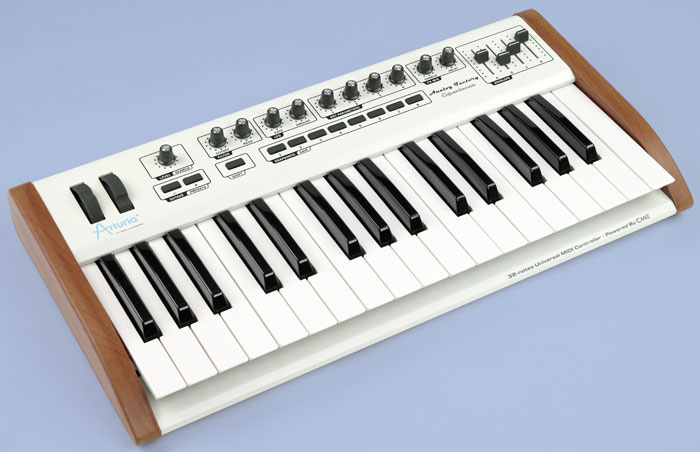

The final filter controls are three switches. A Decay On switch determines whether the Decay time is also applied as a Release time.


There's also a knob to set the amount of the ADS (Attack, Decay, Sustain) envelope applied to the cutoff frequency. This is a single 24dB-per-octave low-pass device, with controls for cutoff frequency and 'Emphasis' (or, as we'd now usually describe it, resonance). The outputs from the oscillators pass to a passive Mixer, where you can select which of them are permitted to travel down the signal path, and also add white or pink noise, as well as audio presented to the external signal input. The signal path begins with the Oscillator Bank, which offers three audio-frequency oscillators, one of which - Osc3 - also doubles as a low-frequency modulator for vibrato and growl, and as an audio-frequency modulator for FM sounds (all three oscillators have 'Lo' settings, but Osc3 is special, because of its routing capabilities, and because you can disconnect it from the keyboard CV). If so, this means it is based on the architecture of the original Minimoog, shown opposite. What's In A Name?Īs its name explains, Minimoog V is not designed to be 'Minimoog Five', but is instead a Virtual Minimoog, imitating its physical design, emulating its features, and claiming to duplicate its sound almost perfectly. It's also compatible with many plug-in host types: VST, DXi (only on PCs), RTAS, HTDM, MAS (only on OS 9 Macs) and AU (only on OS X Macs).

The software works on OS 9 and OS X Macs and under Windows, with minimum spec for all platforms of a 500MHz processor and 128MB of RAM. This appeared in 2004, but it is in its latest incarnation, version 1.1, that it has supposedly reached maturity, with a number of minor bugs eliminated, as well as claimed improvements in its emulation of the original Minimoog's filter. Notwithstanding their endeavours in the field of studio software, they have perhaps become best known for three software synths: Moog Modular V, the Yamaha-inspired CS80V, and the subject of this review, Minimoog V. We see how they fare in their attempt to capture the mighty Minimoog in software.Īrturia have been making quite a name for themselves of late. Arturia caught our attention with Storm, the virtual studio suite, but of late they've diversified into emulating classic hardware instruments.


 0 kommentar(er)
0 kommentar(er)
